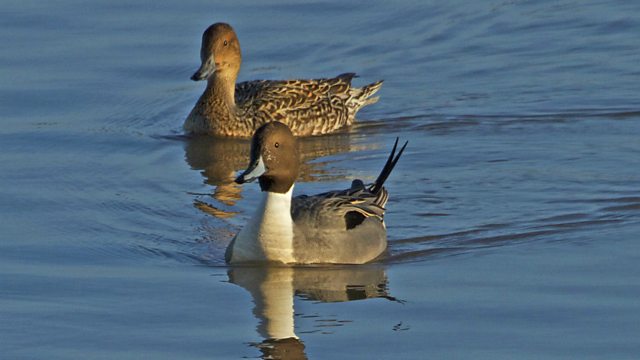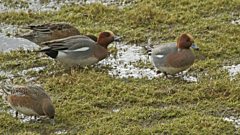Dabbling Ducks
Chris Sperring visits the Wildfowl and Wetlands Trust in Gloucestershire to find out why ducks such as pintail, teal and mallard 'dabble'.
In winter, the UK's estuaries and wetlands play host to many species of 'dabbling,' or surface feeding, ducks. Chris Sperring visits the Wildfowl and Wetlands Trust reserve at Slimbridge in Gloucestershire to find out more about them. In the company of Richard Hearn, Head of Species Monitoring for the Trust, he sees flocks of wigeon and hears their 'whistling' calls.
Although teal are resident in the British Isles, their numbers are swelled in winter by a migrant population that take advantage of milder weather and a plentiful food source found in wetlands. Chris also comes close to the most elegant of dabbling ducks, the pintail, and encounters the UK's most common species of duck, the mallard.
Last on
More episodes
Previous
Next
Richard Hearn

He currently manages the Species Monitoring team, and also represents WWT on a number of groups including the , and African-Eurasian Waterbird Monitoring Partnership Steering Group.
He has particular interest in improving global status assessments of waterbirds and the sustainable management of huntable species. He considers himself very fortunate to have taken part in waterbird surveys and research in a range of countries, from Botswana to China and is also an experienced bird ringer and current member of the BTO’s Cannon-netting Technical Panel.
Broadcast
- Sun 1 Mar 2015 06:35Βι¶ΉΤΌΕΔ Radio 4



